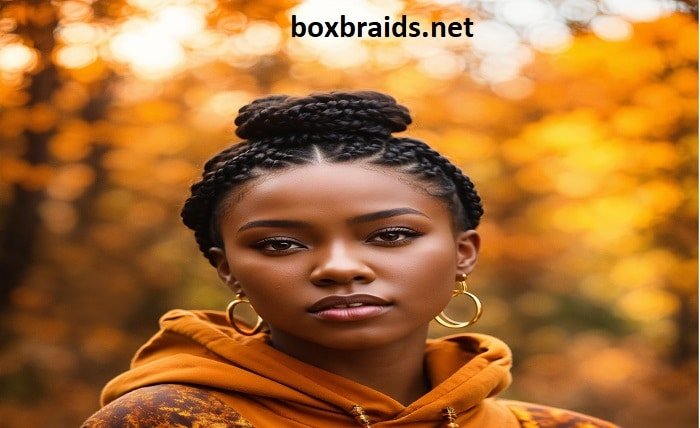Knotless Braids vs. Box Braids: Which Style Suits You Best?

When it comes to protective styling, both knotless braids and box braids are popular choices among those looking to enhance their hairstyle with braids. This blog post will compare these two braiding techniques, examining their benefits, drawbacks, and ideal use cases to help you decide which might be best for you.
Knotless Braids
Knotless braids are a variation of traditional box braids but without the small knot that usually starts at the root of the braid. This method involves gradually feeding the braiding hair into your natural strands to reduce tension and provide a flatter, more seamless appearance. Knotless braids are celebrated for their painlessness and the reduced stress they place on the scalp.
What Are Box Braids?
Box braids involve sectioning the hair into square-shaped divisions, which gives them their name. This style uses a three-strand braiding technique that starts with a tight knot at the scalp. While box braids are known for being a bit heavier, they’re also renowned for their traditional aesthetic and durability.
Installation Process
The installation process of knotless braids tends to be longer than that of box braids due to the technique of gradually feeding in the braid. Conversely, box braids, while potentially quicker to install, can cause discomfort initially due to the tight knots used at the base of each braid.
Longevity and Maintenance
When it comes to maintenance, both styles require similar care routines, including regular moisturizing and night-time protection with a silk scarf or bonnet. However, knotless braids might need more frequent touch-ups due to their looser roots, whereas box braids can last a bit longer between salon visits.
Comfort and Scalp Health
Knotless braids offer a significant advantage in terms of comfort and scalp health. The technique reduces tension, which can help prevent headaches, hair breakage, and even traction alopecia. Box braids, although improving with new lighter materials, still pose a risk for those with sensitive scalps due to the tightness of the knots.
Versatility and Styling
Both knotless braids and box braids offer a high degree of versatility in styling. However, knotless braids might provide a more natural and seamless transition from your natural hair to the braid, which can offer slightly more flexibility in styling, especially up-dos, as they lay flatter against the scalp.
Cost Considerations
Typically, knotless braids can be more expensive than box braids. The increased time and skill required to install knotless braids drive up the cost. However, the added comfort and lessened potential for hair damage might justify the extra expense for many.
Best Practices for Care
Maintaining either knotless braids or box braids involves regular cleansing with a gentle shampoo, using a spray or serum to keep the scalp moisturized, and avoiding heavy products that can cause build-up. Proper nighttime care, such as using a satin pillowcase or a headwrap, is crucial to extend the life of either style.
Cultural Significance and Trends
Both knotless and box braids have deep cultural roots and significance, being a staple in the styling repertoire of many African and African American communities. They’ve also both seen mainstream popularity and innovation, frequently being adorned with beads, shells, or colored extensions to fit personal tastes and current fashion trends.
Conclusion
Choosing between knotless braids and box braids often comes down to personal preference, scalp sensitivity, and budget. If you prefer a lighter, more natural style with less tension, knotless braids may be the better choice. However, if you’re looking for a more traditional look and longer-lasting style that potentially costs less, box braids could be the way to go. Both styles offer excellent protective qualities and can be tailored to fit your aesthetic and lifestyle needs.
FAQ
1. Which style is more protective for the hair, knotless braids or box braids?
Both styles are protective, but knotless braids offer the advantage of less tension on the scalp, which can help reduce the risk of hair damage and loss.
2. How long do knotless braids and box braids last?
Knotless braids typically last 4 to 6 weeks, while box braids can last 6 to 8 weeks, depending on the care and maintenance routine.
3. Are knotless braids suitable for all hair types?
Knotless braids are suitable for most hair types, but they work best on hair that has some natural texture, as the braids need to hold without slipping.
4. Can I wash my hair with knotless braids or box braids?
Yes, you can gently wash your hair while wearing either style. Use a diluted shampoo and focus on the scalp, letting the suds run down the length of the braids.
5. What should I do if I experience itching or discomfort with these braids?
If itching occurs, use a soothing scalp serum or oil designed for braids. If discomfort continues, especially with box braids, it may be due to tightness, and consulting a professional stylist for advice or adjustment is recommended.




